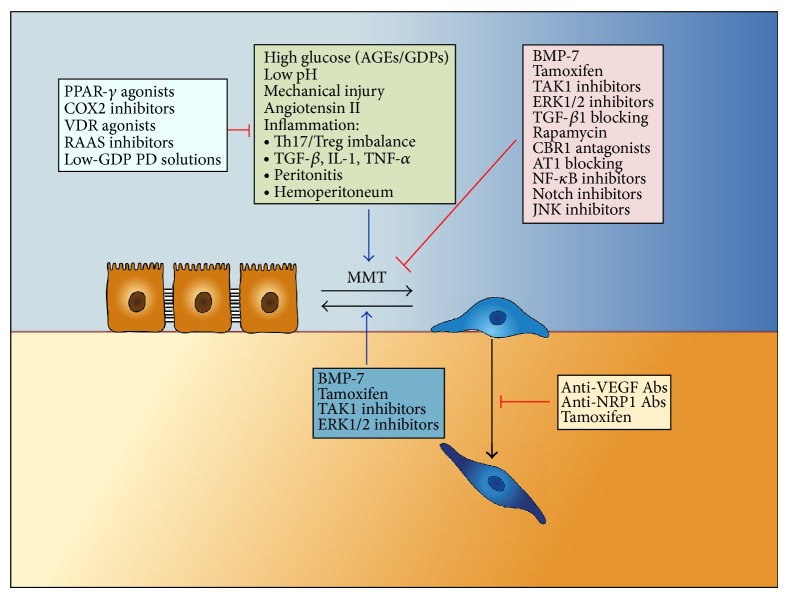Figure 6.
Therapeutic strategies for peritoneal membrane failure based on MMT. MMT in vivo results from integrated signals induced by multiple stimuli. These include high concentration of glucose and glucose degradation products (GDPs) in the PD fluids, which contribute to the formation of advanced glycation-end products (AGEs) and stimulate the mesenchymal conversion of MCs. The low pH of the dialysates and the mechanical injury during PD fluid exchanges may cause tissue irritation and contribute to chronic inflammation of the peritoneum, which promote MMT. Episodes of bacterial or fungal infections or hemoperitoneum cause acute inflammation and upregulation of cytokines and growth factors such as TGF-β, IL-1, TNF-α, and Angiotensin II, among others, which are strong inducers of MMT. The therapeutic strategies may be designed either to prevent or reverse the MMT itself, to decrease the MMT-promoting stimuli, or to treat MMT-associated effects such as the invasion capacity to avoid their accumulation in the compact zone. The diagram illustrates aspects related with the MMT process that can be clinically managed, alone or in combination, in order to prevent peritoneal membrane failure. See text for details.

